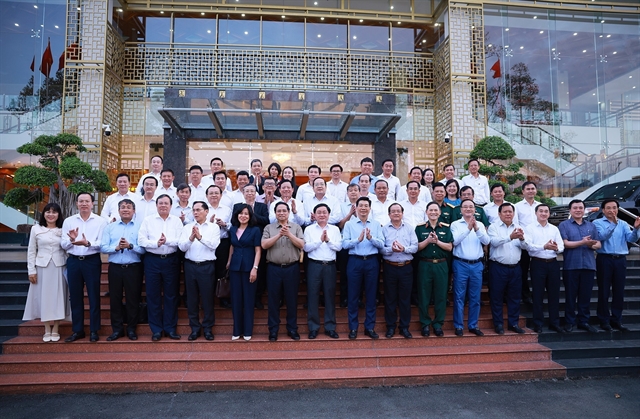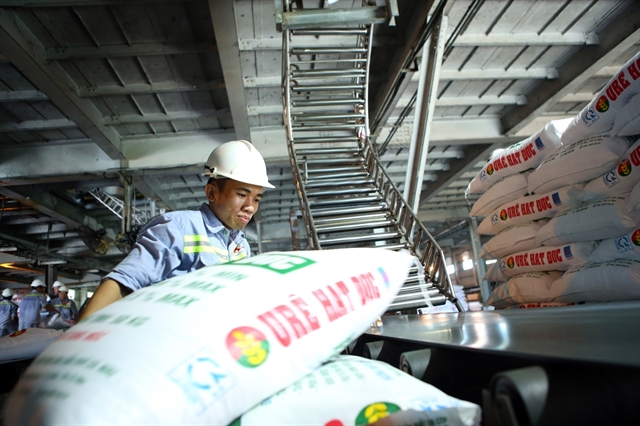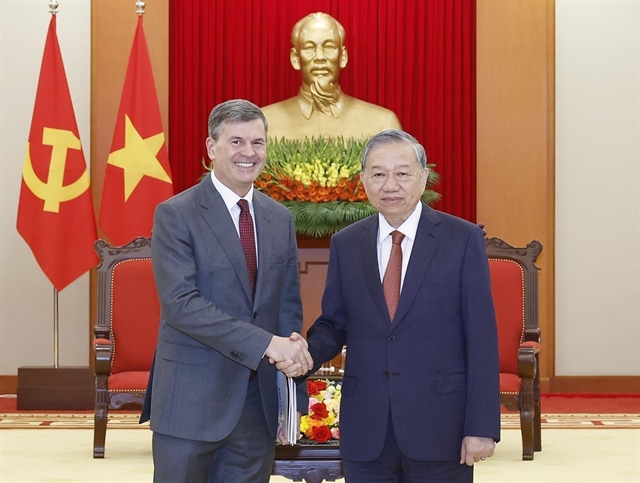 Economy
Economy


|
| Cà Mau fertiliser plant. Fertiliser prices in 2021-2022 increased rapidly in the past 50 years, with a VNĐ1-1.9 million per tonne growth rate. VNA/VNS Photo Huy Hùng |
HÀ NỘI — Fertiliser prices in the coming months are forecasted to remain at a high level due to the global market's continuing gas and petrol price fluctuations.
According to Phùng Hà, general secretary and vice chairman of the Vietnam Fertiliser Association, many experts in the fertiliser and finance world forecast that fertiliser prices are falling, but the possibility of them remaining at a high level remains.
Gas and petrol prices greatly affect the production cost of fertiliser because gas prices account for about 80-90 per cent of the production cost of ammonia - an important input for urea and DAP fertilisers. Therefore, fertiliser prices in the coming months will still fluctuate unpredictably.
According to a survey of some fertiliser companies and trading agents, the current fertiliser price is at VNĐ10.5 million per tonne of Phú Mỹ urea fertiliser and VNĐ19 million per tonne for potassium sulphate fertiliser, while DAP fertiliser price ranges from VNĐ17 to VNĐ25.5 million per tonne depending on the type.
Hà said that the fertiliser prices in 2021-2022 increased rapidly by VNĐ1-1.9 million per tonne. However, China has started to open up the market and has not been limited to exporting 29 types of fertiliser, so the supply of fertiliser in the world market has been abundant, and fertiliser prices have also started to cool down.
For fertiliser supply for the winter-spring crop 2022-2023, at present, the production capacity of urea at four factories under the Vietnam Oil and Gas Group (PVN) and the Vietnam Chemical Group (Vinachem) has reached 2.5 million tonnes per year, while the domestic demand is only 1.6-1.8 million tonnes each year.
The domestic supply of phosphate-containing fertiliser and NPK fertiliser is higher than the local demand. However, Việt Nam still has to import about 40 per cent of DAP fertiliser and all potassium fertiliser volume to meet the domestic demand.
Vũ Xuân Hồng, deputy general director of Lâm Thao Fertiliser and Chemical Joint Stock Company, said that to ensure the supply and reasonable price of fertiliser for farmers, the company prepared before the Tết holiday a large volume of raw materials for production within at least three months, such as SA, sulfur, potassium.
Lâm Thao expects to meet the supply for the agricultural production of the winter-spring crop 2022-2023 with over 30,000 tonnes of fertilisers of all kinds in store and a production output of nearly 2,000 tonnes of fertiliser per day, Hồng said.
According to Hồng, to keep stability in fertiliser prices for farmers, Lâm Thao has found input materials with good prices, such as SA imported from the Middle East and Africa and urea imported from domestic factories.
With these efforts, the market prices of Lam Thao's fertiliser products are kept stable compared to the fourth quarter of 2022.
Besides that, Lâm Thao has had efforts to reduce the cost of transporting fertiliser in the context of higher gasoline prices and handling costs.
Accordingly, the company has diversified forms of transporting fertiliser, including using cheaper transport means such as railway, waterway, and river instead of road transport as before, Hồng said.
According to Hoàng Văn Hồng, deputy director of the National Centre for Agricultural Promotion, the centre works closely with localities to guide farmers in using fertilisers reasonably, economically and effectively. It also encourages farmers to increase the use of organic fertilisers. VNS




